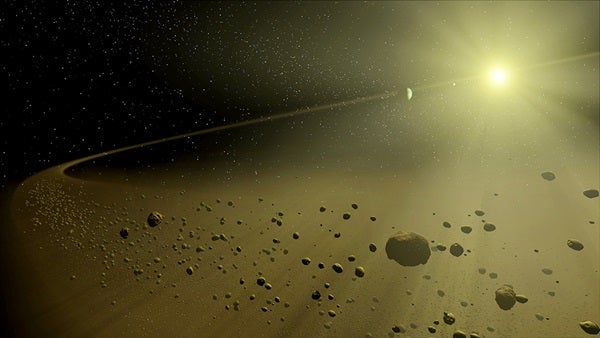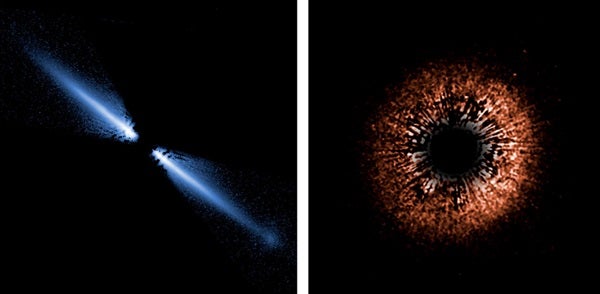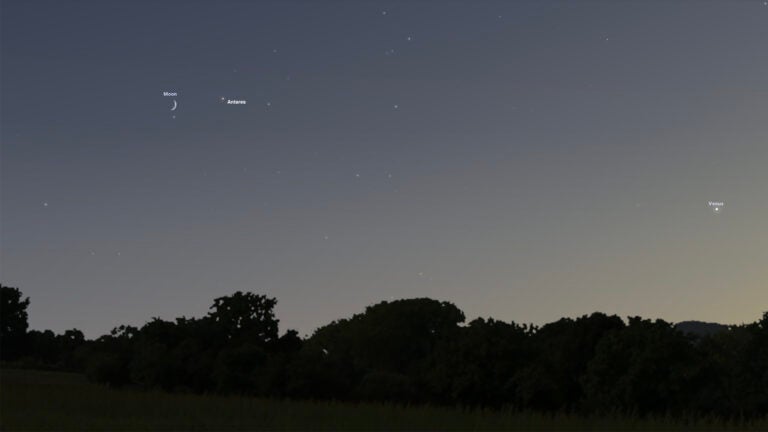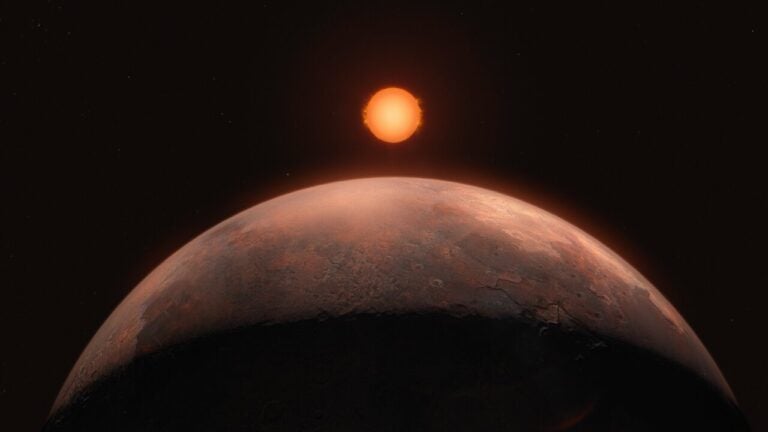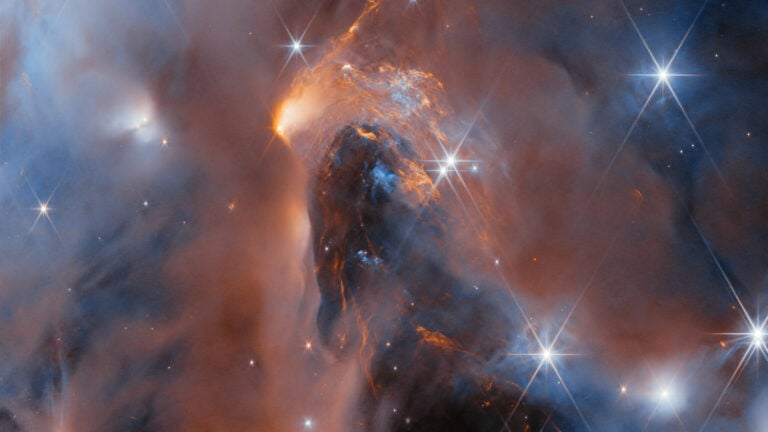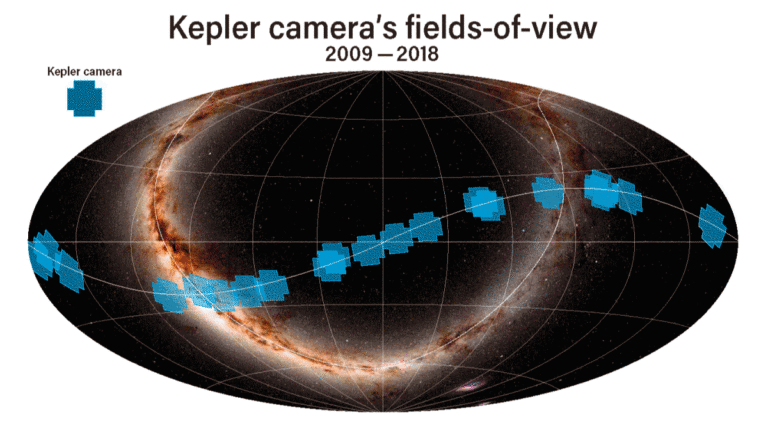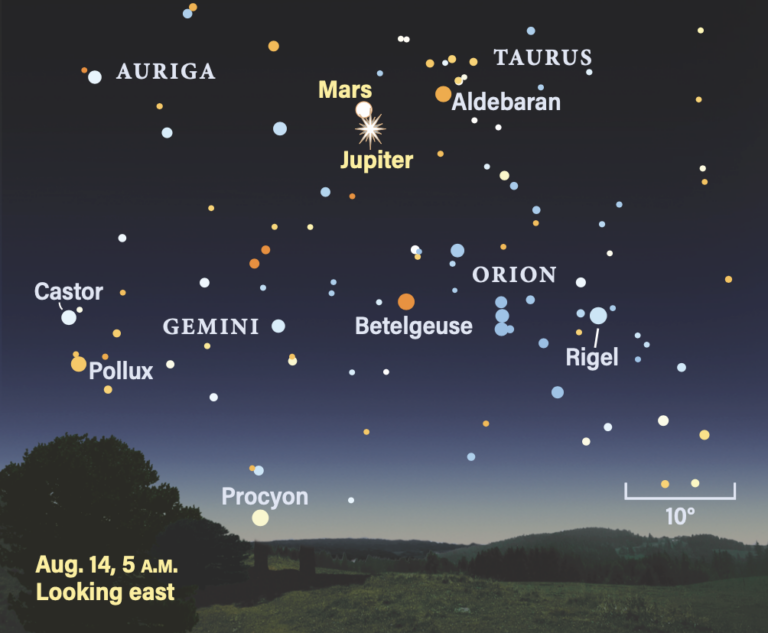Astronomers and geologists have several techniques for dating Earth, and, therefore, the age of the solar system. From the radiometric dating of rocks, which measures the known decay rates of radioactive elements, we know Earth and the solar system are approximately 4.6 billion years old. The knowledge does not come from Earth rocks, however, the oldest of which are about 3.9 billion years old. (Earth rocks are constantly involved in vigorous erosion — by plate tectonics and volcanism — making the oldest rocks on Earth extremely hard to find.)
Instead, meteorites — chunks of asteroids, the Moon, and Mars — make dating the solar system more accurate. These bodies were left in more pristine form. The oldest radiometrically dated thus far are 4.6 billion years old, and so the solar system itself must have formed near this time.
While many ideas in astronomy have changed radically over time, the notion of how the solar system formed has changed little in the last 250 years. In 1755, German philosopher Immanuel Kant first proposed the nebular hypothesis, in which a great cloud of material, the solar nebula, preceded the Sun and planets.

Bringing the universe to your door. We’re excited to announce Astronomy magazine’s new Space and Beyond subscription box – a quarterly adventure, curated with an astronomy-themed collection in every box. Learn More >>.
In 1796, French astronomer Pierre Simon Laplace put forth a similar theory. Although he was unable to draw on supporting evidence from observations of deep space, Kant proposed the solar nebula was part of a much larger cloud of gas and dust that fell in by the weight of its own gravity and began to rotate. This gravitational contraction led to the formation of planets, both gaseous and rocky. Although the scope of knowledge about how this happened has grown considerably since Kant’s time, the basic idea is the same, and it has been borne out by repeated bits of evidence.
Astronomers now know when the solar system’s molecular cloud began to collapse, it measured 100 astronomical units across (1 astronomical unit is the average distance between the Sun and Earth) and had about two or three times the Sun’s mass. The cloud’s gravitational collapse may have commenced by the flash of a nearby supernova and the resulting pressure wave.
As the cloud fell in, several processes accelerated the collapse. The cloud’s temperature rose, it began to rotate, and the rotation settled material into a relatively flat disk. The gravitational potential energy increasingly transformed into heat, and the density rose quickly.
Due to the conservation of angular momentum, the flattening disk rotated more quickly as it decreased in size. As more and more pockets of gas and dust collided and stuck together, a protoplanetary disk formed, resembling a spinning pancake.
The greatest action took place at the disk’s center. There, the infant protostar that became the Sun rapidly accumulated matter. After some 50 million years, the protosun gathered enough mass to commence nuclear fusion and it “turned on” as a star.
Out in the disk, meanwhile, matter continued to clump together haphazardly, making planets, thousands of minor planets, and smaller rocky balls. After the Sun’s ignition, it produced a blazing solar wind that blew minor debris and dust out of the disk. At this point, the gas giant planets stopped accreting into larger bodies. The gas remaining in the disk, meanwhile, cooled and condensed dust (silicates and metals) and ice from the cloud. Grains of dust and ice built other planetesimals, and more and more of them stuck together to build bigger bodies.
Distant bodies in the outer solar system built up as ice worlds, and the gas giants accumulated gaseous clouds around their dense cores. Extensive sets of moons around the gas giants grew as an analog to the solar system’s planets themselves. Each gas giant helped sweep the disk clean by its gravity and flung many planetesimals into the distant Oort Cloud of comets. Then, a period of heavy bombardment of numerous objects impacting the inner planets began. A giant body impacted Earth and created the Moon, and other smaller bodies became satellites, as with the moons of Mars.
The formation of the solar system offers astronomers a rare model of an early hypothesis being dead right. All the subsequent facts uncovered later in history fell right into place with Kant’s original idea.

